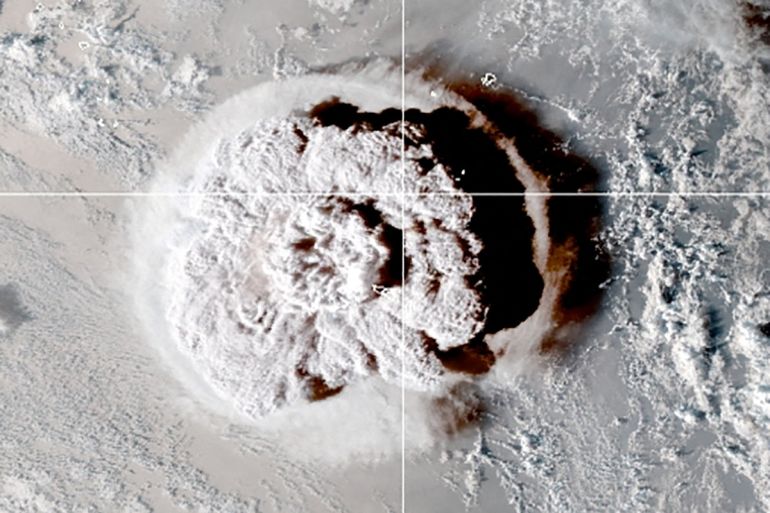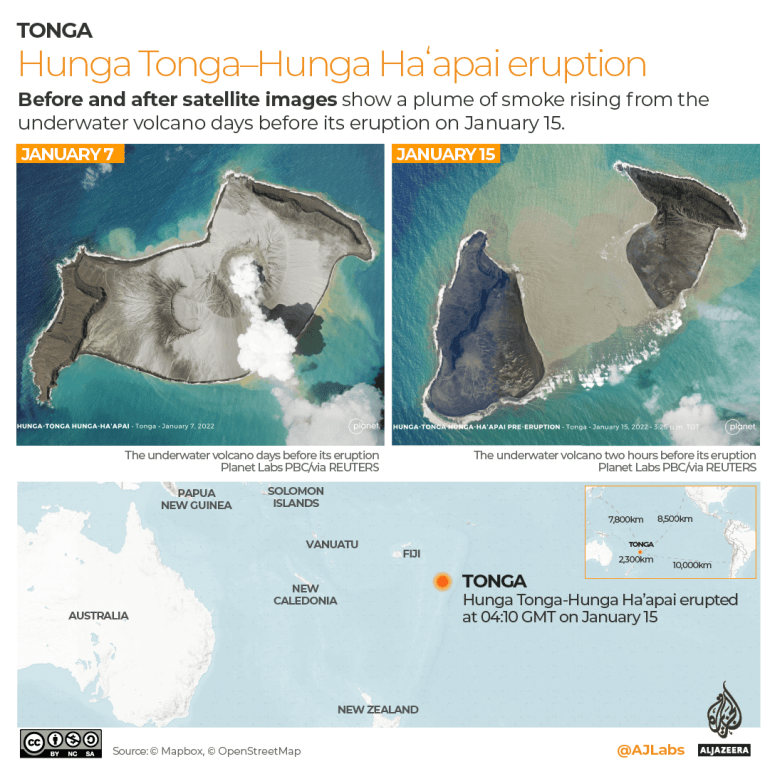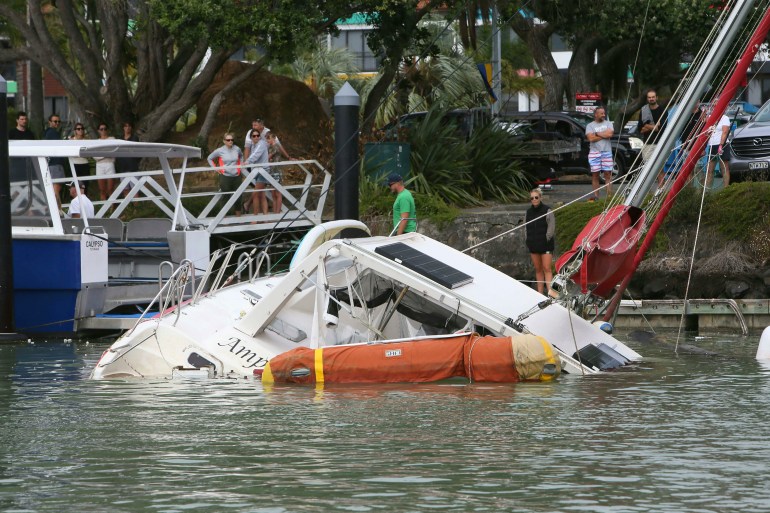Tonga volcano eruption: What we know so far
The eruption of Hunga-Tonga-Hunga-Ha’apai triggered tsunami waves in Tonga and other places around the world.

As the tsunami threat around the Pacific from a massive undersea volcanic eruption began to subside on Sunday, a huge ash cloud covering the Pacific island nation of Tonga prevented surveillance flights from New Zealand to determine the extent of the damage.
The eruption of the Hunga-Tonga-Hunga-Ha’apai volcano on Saturday sent tsunami waves crashing across the shore in Tonga, and rising water levels were reported on the coastline of Peru and the Pacific Coast in the United States.
Keep reading
list of 3 itemsIn Pictures: Tonga volcano eruption triggers tsunami alerts
Tonga volcano eruption caused ‘significant damage’, says Ardern
The capital of Tonga, Nuku’alofa, suffered “significant” damage, New Zealand Prime Minister Jacinda Ardern said, adding there had been no reports of injury or death but a full assessment was not yet possible with communication lines down.
Here is what we know so far about the Hunga-Tonga-Hunga-Ha’apai volcano eruption.
What is an undersea volcano?
An undersea or submarine volcano is located below the ocean surface and mostly erupts under water.
There are an estimated one million undersea volcanoes that, like continental volcanoes, are located near the Earth’s tectonic plates and where they form. These volcanoes not only deposit lava, but can also spew out large amounts of volcanic ash.
According to the Global Foundation for Ocean Exploration group, about “three-quarters of all volcanic activity on Earth actually occurs underwater”.
Undersea volcanic activities give rise to seamounts – underwater mountains that are formed on the ocean floor but do not reach the water surface.

How often does Hunga-Tonga-Hunga-Ha’apai erupt?
The Hunga-Tonga-Hunga-Ha’apai volcano, which lies about 65km (40 miles) north of the capital of Nuku’alofa, has a history of volatility.
In recent years, the Hunga-Tonga-Hunga-Ha’apai breached sea level during a 2009 eruption. In a 2015 eruption, it spewed so many large rocks and ash into the air, it caused a new island to be formed measuring 2km (1.2 miles) long and 1km wide and 100 metres (328 feet) high.
On December 20 last year and then on January 13, the volcano erupted again, creating visible ash clouds that could be seen from the Tonga island Tongatapu. On January 15, another massive eruption occurred, triggering tsunami around the Pacific.
Volcanologist and science journalist Robin George Andrews told Al Jazeera that undersea volcanoes like Hunga-Tonga-Hunga-Ha’apai erupt in such an explosive way about once every 1,000 years.
“There was this giant explosion, which scientists think is one in 1,000-year event for this sort of volcano,” he said.
“It takes about 1,000 years to fully recharge and we just happen to be around the point where is unleashed that the vast amount of its magma in a very explosive way,” Andrews said.
What caused the tsunami waves?
Undersea volcano eruptions can lead to tsunamis, a series of ocean waves caused by the displacement of water.
However, the process by which this happens after an undersea volcanic explosion is still debated among scientists.
Andrews said it was not clear what caused the tsunami waves seen in the aftermath of the January 15 eruption.
“It’s not exactly clear what caused the tsunami that happened immediately after this giant explosion. So whether that was part of the volcano collapsing into the water, or it was an explosion underwater, or combination of both remains to be seen,” he said via Skype from London, UK.
January 15 eruption
Satellite images showed a plume of ash, steam and gas rising like a mushroom above the blue Pacific waters on Saturday evening, with a sonic boom heard as far away as Alaska, United States.
In Tonga, it sent tsunami waves crashing across the shore and people rushing to higher ground.
After the eruption, the internet in Tonga was cut, leaving friends and family members across the globe anxiously trying to get in touch to figure out if there were any injuries.
“It’s probably one of the most energetic explosions of the entire 21st century so far,” Andrews said.

The United Nations children’s agency said it was preparing emergency supplies to fly into Tonga in coordination with Australia and New Zealand.
In California, the city of Santa Cruz was hit by flooding due to a tidal surge generated by the tsunami, videos retweeted by the US National Weather Service showed.
Peru closed 22 ports as a precaution while waves of nearly 1.2 metres (4 feet) hit along Japan’s Pacific coast.